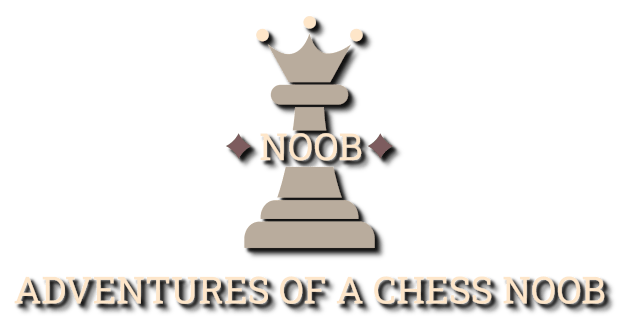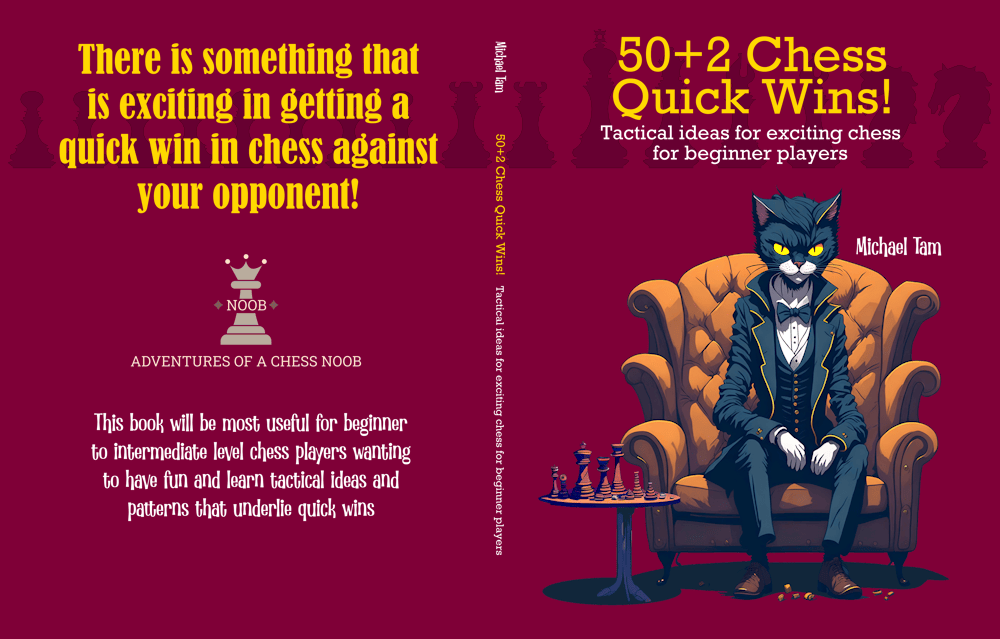
Book Review | Levy Rozman (GothamChess), How to Win at Chess
#bookreview #gothamchess
Last week, my signed copy of "How to Win At Chess: the ultimate guide for beginners and beyond", written by Levy Rozman, aka GothamChess, arrived in the post!
This will be a quick review of the book with some of my thoughts regarding where it fits.
Now, first a TL; DR summary:
Consider buying this book if you are a GothamChess fan!
And I'll declare straight up - I am a fan of Levy! When I got back into chess during the pandemic, I had two major inspirations. First was the amazing Queen's Gambit Netflix series, which got me back into playing some online games. The second was in fact Levy's YouTube channel in those early days! In addition to finding his content fun and entertaining, I found his early instructional content very useful in terms of learning to improve. For instance, I first learnt of the Vienna Game from his channel, and then later, bought his e4 course to understand it better. I've followed his content a bit less in the past year, but Levy's recaps and analyses of the Word Chess Championship between Ding and Nepo were amazing! At least, I think so!
So, I was always going to buy a copy of Levy's book as a way of supporting someone who has inspired my love for the game. If you have been inspired by Levy's channel, you should consider buying his book as well!
Now, on to the actual review. Those of you who are perceptive might have already detected a subtext that I have some reservations.
The book is organised into two parts - Part I 0-800 ELO, and Part II 800-1200 ELO. It describes itself as the "ultimate guide for beginners and beyond". I agree that it is aimed at those completely new to chess to those in the early intermediate level, which is probably around 90% of all recreational players.
The book covers the introductory basis of chess - the board, the pieces, how they move, and the rules. It covers basic openings, endgames, tactics, and strategy - first at the beginner level, and then at the intermediate level.
This is a lot of ground to cover, and the book isn't very long - only around 250 pages of content with around half of this taken up by diagrams. Now, I think that everything that is covered in the book is very useful and simply written. Much of it will feel familiar and easy to understand, especially if you've watched and liked Levy's content on his channel previously.
However, the trade-off from the breadth of the book is that many of the topics discussed are quite brief and not in much depth. Unfortunately, this results in a lot of the text to be descriptive at a more surface level. In essence, in the book Rozman tends to describe and show, rather than explain and explore. From an adult lear ning perspective, this might not be the best approach for someone hoping to use the text to learn principles and approaches, and to gain insights for their development.
At the end of each chapter is a QR code that goes to online material on Rozman's chess course platform, Chessly. Although additional content is of course welcome, I think that your mileage may vary depending on your perspectives on this. I must admit, I don't buy a book to then have to go to an online site to access the rest of the content. The primary content should be in the book, and any online content should be something that augments that, rather than as a substitute of more pages. For instance, Chapter 10 (Intermediate Openings) covers the London System, Vienna System, and Alapin Sicilian, but each too briefly to be useful unless you already understood the opening. Of the Vienna Game (the opening I know the best) the book includes only FOUR pages covering two lines. Other than as a taster and introduction to the existence of the Vienna, a reader who is not familiar with this opening will not develop a meaningful understanding of it in either the book text or the online content. Moreover, with the content hosted on Chessly rather than a major publisher's website, future access to this content will depend on the continuing commercial success of the Chessly platform.
That said, the book does have flashes of genius. The best part of the book in my view is Chapter 14 (Intermediate Tactics), where Rozman expounds and demonstrate across a number of contexts his "CCA" heuristic - checks, captures, attacks. This chapter is fifteen pages of brilliance, especially for a beginner-intermediate player, and I wish more of the book was like this.
It is interesting to compare Rozman's new book to another "ultimate guide" - "Pandolfini's Ultimate Guide to Chess" by Bruce Pandolfini published twenty years ago in 2003. Pandolfini takes a very different approach to Rozman. Rather than simply describing, Pandolfini explores and then explains the principles - from the most basic things (such as how pieces move) to more advanced strategies in the middlegame and endgame. Pandolfini also uses a brilliant literary Socratic style - the text is written as a dialogue between a student and their teacher. In this way, we can project ourselves as the learner, and questions we may have (or should have) are made explicit in the interactive discourse. Pandolfini's book is longer than Rozman's book, by about 40% in the main text (roughly 350 pages vs 250 pages), but it covers a lot more than an extra 40%.
Who is Levy Rozman's "How to Win at Chess" for? I think that the self-described rating of up to 1200 ELO is very reasonable, and it's a perfectly good book for recreational players who want some easy-to-follow tips. The book is handsome and attractively designed, and it’s easy to read. I like it. I think this book is fantastic for fans of GothamChess. However, I think for intermediate chess players and up who want something meatier, it might not be the best choice.
However, what do you think? Those of you who have also bought a copy, what do think are the best parts of the book, and parts that could be improved in a future revision? Let me know in a comment!
I hope you enjoyed this video, and thanks for watching!



